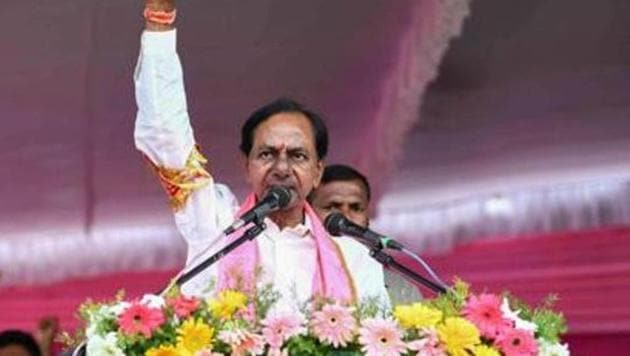How KCR led his party to a landslide victory, and where the Congress went wrong
KCR ‘s strategy of premature dissolution of state Assembly has certainly yielded rich electoral dividend
Upending most of the exit poll predictions, Telangana chief minister K Chandrashekar Rao, popularly known as KCR, led his party Telangana Rashtra Samithi (TRS) to a landslide victory. The party won 88 seats and polled 46.9% votes which is a massive increase of over 12% as compared to 2014 . This shows a clear positive vote for KCR whose regime suffered no universal discontent. Meanwhile, a slew of welfare schemes helped to build a strong vote bank among the poor and women. The increased participation of rural voters, especially the women and elderly, defined the mandate of 2018, indicating the popularity of his schemes. In fact, many of TRS MLAs who were renominated were incurring the anti incumbency. But the popular ratings enjoyed by KCR could nullify the adversity.

The welfare schemes initiated by KCR like the cash support of ₹8,000 per acre per year, ₹5 lakh insurance, cash assistance of over ₹1 lakh for the girl child in BPL families at the time of marriage, pensions for the elderly, widows, beedi workers, and differently abled, have created a pro-incumbency for TRS . The discontent was sporadic and confined to few sections like the educated unemployed.
Although the Congress lost the polls very badly, the party could increase its voting tally from 25.2% in 2014 to 28.4% in 2018. Given the fact that it left about 20 seats to its allies indicate that the Congress voting tally would have been much higher, since the party contested on its own in 2014 . This clearly indicates that the Congress improved its position, but the four party alliance which it forged, failed to deliver for a host of reasons.
The Congress had an understanding with Chandrababu Naidu’s Telugu Desam Party (TDP) and the Telangana Jana Samiti (TJS) led by Professor Kodandaram, chairman of the Telangana Joint Action Committee (TJAC) that spearheaded the movement for separate state, and the CPI . But, the electoral arithmetic did not work for the benefit of the Congress. The TDP suffered huge erosion post-bifurcation especially due to the defection of its leaders to the TRS or the Congress. The post-bifurcation narrative was incongenial for the growth and survival of the TDP in Telangana . The TDP is a ruling party in Andhra Pradesh with which Telangana has serious differences. The party is led by the chief minister of the neighbouring state. This turned out into a big embarrassment for Congress, as the TRS made this alliance with the TDP the main political plank. KCR cleverly and successfully painted the contest as the fight with Chandrababu Naidu. This triggered a Telangana sentiment much to the advantage of TRS. The sharp fall in TDP voting did not deliver the expected favourable electoral arithmetic for the Congress. The TDP voting plummeted to 3.5% from 14.7%.
The TJS was a non starter and the CPI was a negligible player. Thus, the people’s Front forged by the Congress failed to provide the much needed electoral muscle for the Grand Old Party .
The absence of even a single woman minister in KCR’s cabinet, non-representation to the two major Dalit groups, Madiga and Mala, in the state cabinet, stifling of democratic dissent which even the High Court has found fault with, the allegations of unprecedented escalation in the cost of irrigation projects indicating large scale politician-contractor nexus etc, failed to wean away the voter from the TRS as such issues remained the concerns of urban middle classes who were luke warm to electoral participation.
The sad part of the story is that state witnessed unprecedented display of money power which does not augur well for the democratic process in the new state formed after decades of struggle and hope.
K Nageshwar is a senior journalist and former Member of Legislative Council from Telangana
The views expressed are personal






